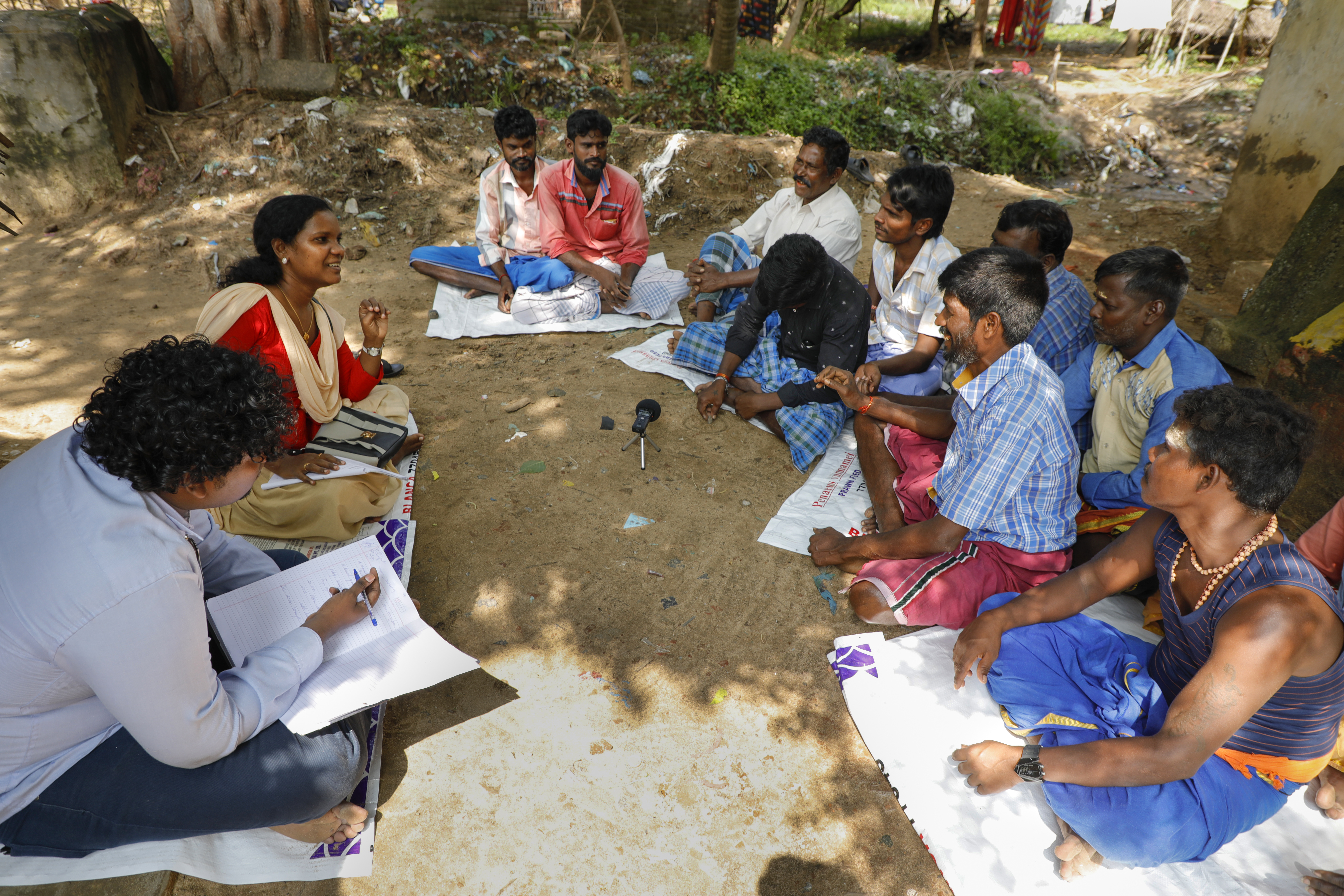Submitted by Sarah Bailey on Thu, 19/12/2019 - 11:39
Dr Pratheepa from MS Swaminathan Research Foundation (MSSRF), Chennai and a collaborator on TIGR2ESS Flagship Project 1, START. Here she shares her experiences of her fieldwork in Sirkazhi block of Nagapattinam district, uncovering the complex set of challenges faced by farmers and their families.
Going to Sirkazhi, our study site, is always a memorable experience where one can see the array of different agricultural activities in the coastal zone. The Sirkazhi region proudly hosts the historical ancient urban settlement of Poombuhar. Now under the jurisdiction of Nagapattinam district in Tamil Nadu, Poombuhar - meaning ‘The town with prosperity' - was once a flourishing ancient port city and the root for two epics of Tamil literature, Silapathigaram and Manimegalai.
As part of the TIGR2ESS programme, MSSRF has selected Sirkazhi for its ‘Deep Dive’ research which is a coastal agro-ecosystem. This has given me the opportunity to visit the region frequently for field work, studying agricultural issues and exploring the potential for sustainability.
Sirkazhi has a complex and vulnerable agro-ecosystem, with issues of soil and water salinization, conversion of agricultural land to aquaculture, alongside an increasing reluctance for the next generation to farm the land. My fieldwork has been crucial in allowing me to understand the social, economic and ecological aspects of farmers' lives in Sirkazhi. A series of increasingly detailed visits has provided an excellent opportunity to interact with a diverse set of stakeholders.
“Even though agriculture is our ancestors’ main occupation, we are not able to involve in this full time [sic] as we get less income.”
Statements like the one above, from a youth group, have forced us to rethink and reassess the pitfalls of farming and the need to foster sustainable solutions throughout the entire supply chain, from sowing seeds through to marketing produce. From my field visits I have found that farmers have shifted from production of food crops to cotton cultivation, a direct consequence of agro-ecological changes owing to soil and water salanization. Such immense changes in agriculture have led to farmers seeking out alternative livelihood options, a phenomenon I have seen in my past fieldwork with fishermen.
Vast acres of cultivated land in Sirkazhi have been converted to aquaculture ponds; many gave their land to contractors for prawn cultivation and more acres of land still were sold to realtors for power plant or other industries. It is clearly evident from my discussions with farmers that people are much less inclined to stay in farming due to its poor economic viability, especially at the small holders’ level. One farmer shared that:
“Our parents taught us to do farming when we were in childhood. But our children are not coming to this. We are educating them which will earn them a good and reliable source of income with that [sic] newly acquired skills.”
Options for future livelihoods seem to lie away from farming. Women too prefer their children to work in a ‘decent’ profession, other than agriculture:
“We and our lands are drying now itself. Then how we say to our children to do farming? Unless there is a solution for soil and water salinity, we don't have any hope further for continuing agriculture in our village.”
However, it appears that some of the youth from agricultural landholder's families are eager to work on the land. Though there is a visible growth in livelihood transition from agriculture to aquaculture, the youth still feel a sense of place on their land:
“We are not interested in doing prawn cultivation in our land as we do not consider it is a farming activity. We want to hold our land until we die.”
Yet these youth face many barriers: non-availability of canal water, saline water intrusion, a lack of labour and a reduction in profits from farming. They feel there is a lack of guidance and support from experts to access current schemes and loan facilities, alongside inadequate access to innovations and technologies and no reliable source for marketing their products. These are the stumbling blocks to succeeding in agriculture.
Despite the issues in Sirkazhi region, farmers are trying to overcome the hurdles they face in sustaining agriculture. They are raising the groundwater level, working to prevent saline water intrusion, channelising canal water and desilting the existing ponds. These are proving to be effective strategies to enhance the scope of agriculture in coastal villages.
There is a vast potential through collaborative action among relevant stakeholders to make a positive change. Joint hands of all will help establish a new sustainable phase in coastal agriculture. By combining on-the-ground context and narratives with practical solutions identified through TIGR2ESS, our multidisciplinary research provides real hope for the future.

